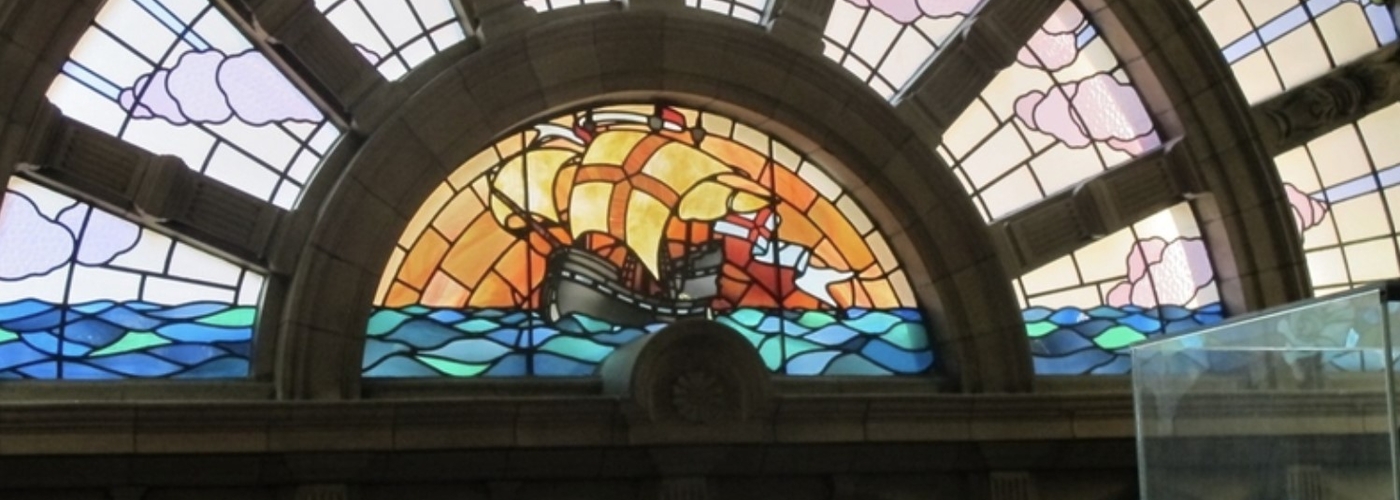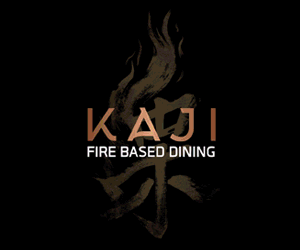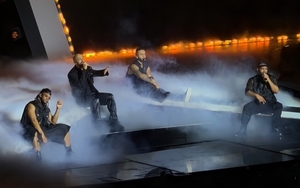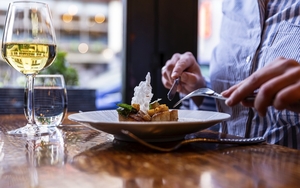Jonathan Schofield finds the meaning behind some of the motifs on and in Manchester buildings
Walk the streets, look at the buildings and go inside them. Many are alive with symbols, motifs, reliefs and sculpture.
As buildings change use and time moves forward many of the meanings behind these details become lost. Below is a selection of some of our favourite features and how to interpret them. This is just a small sample of the symbols in Manchester.
Lovely as it is, Manchester is more than just the bee.
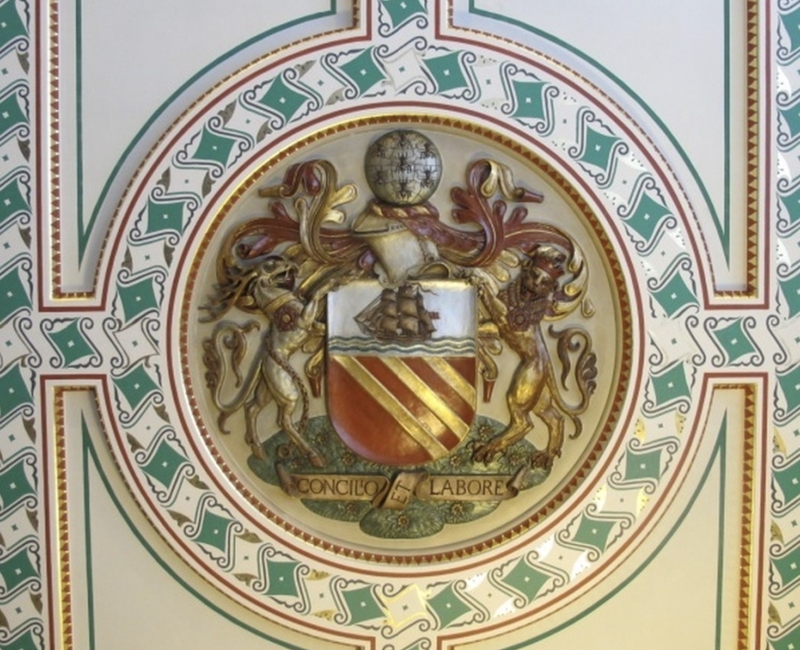
THE CITY COAT OF ARMS | Rates Hall, Town Hall Extension
We've covered how so many city buildings in Manchester feature the coat of arms but it's worth repeating its interpretation because the whole coat of arms or elements of it appear across the city. Granted in 1842, the three bands in the shield are derived from the arms of the former Lords of the Manor of Manchester, the Gresleys, and are believed to represent the three rivers in what is now the city centre: the Irwell, Irk and Medlock. At the top there's a ship in full sail, symbolising international trade and enterprise.
The coat of arms is crowned by a globe alive with Manchester’s symbolic beast, bees. The famous bees are covering the globe because the city's industry, its scientific achievements, and its political credo of Free Trade, had global influence. The bee is the worker bee, industry in animal form. By the way, the worker bee is always female, males are dreary drones. The bee was a purely civic symbol until the tragedy of the 2017 Arena bomb after which it became a popular and internationally recognised symbol of the character of the city.
The supporters on the coat of arms, an antelope and a lion, come from the arms of King Henry IV, Duke of Lancaster, and both animals wear red rose rosettes - Manchester is traditionally in Lancashire of course, red roses are near as commonly found as bees around the city. The lion is an obvious symbol of authority, bravery and strength. The antelope, complete with a chain to mark Manchester's industry, is a symbol of harmony, and polity (negotiation is better than conflict). This matches the city motto; Concilio et Labore meaning "Through council and hard work" or "By working together we can achieve great things."
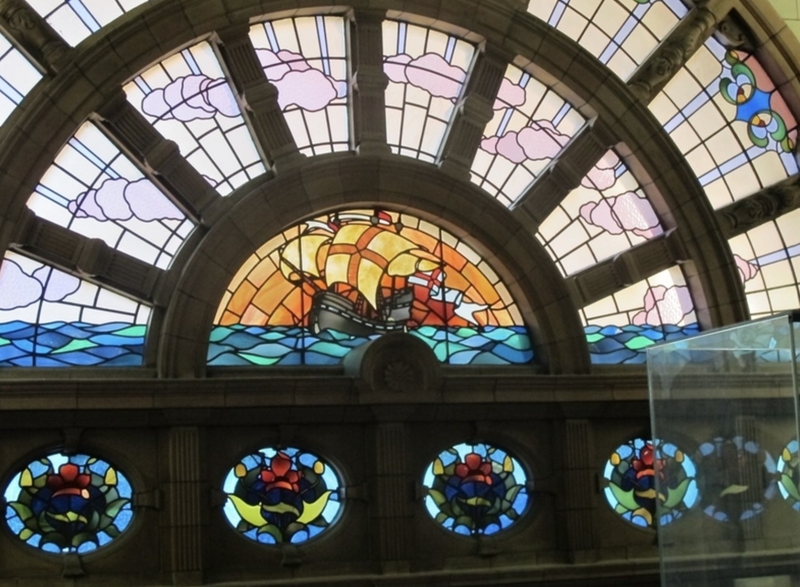

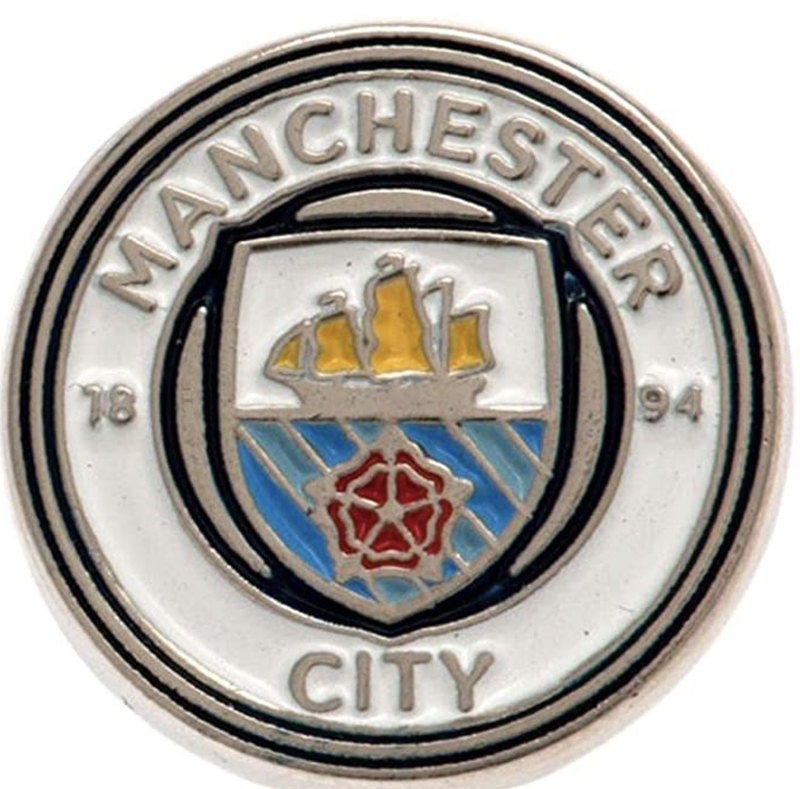
SHIP AHOY | locations all over the city
It's interesting to note that originally it was the ship on the coat of arms that caught Manchester's imagination more than the bee. The ship symbolised our trade and ideas, our global influence and it was placed on the coat of arms way before the Ship Canal opened.
The ship said this inland city has risen to be a port for the world in receiving raw materials and in spreading textiles and engineering across the planet, along with a philosophy of free trade, that nations should not impose tariff barriers on each other but should allow their citizens to do business freely.
As far as I am aware, and I've looked, Manchester is the only inland city in the UK honoured with a coat of arms featuring an international sailing ship.
A couple of famous institutions still sport the city coat of arms proudly as well. Manchester United and Manchester City carry that stirring sailing ship that tops the shield on the coat of arms. City even has the three bars on the shield on its badge - and a red rose for Lancashire.
It's amusing to compare the Manchester ship with the chief symbol on Leeds' coat of arms which is a big dead sheep.
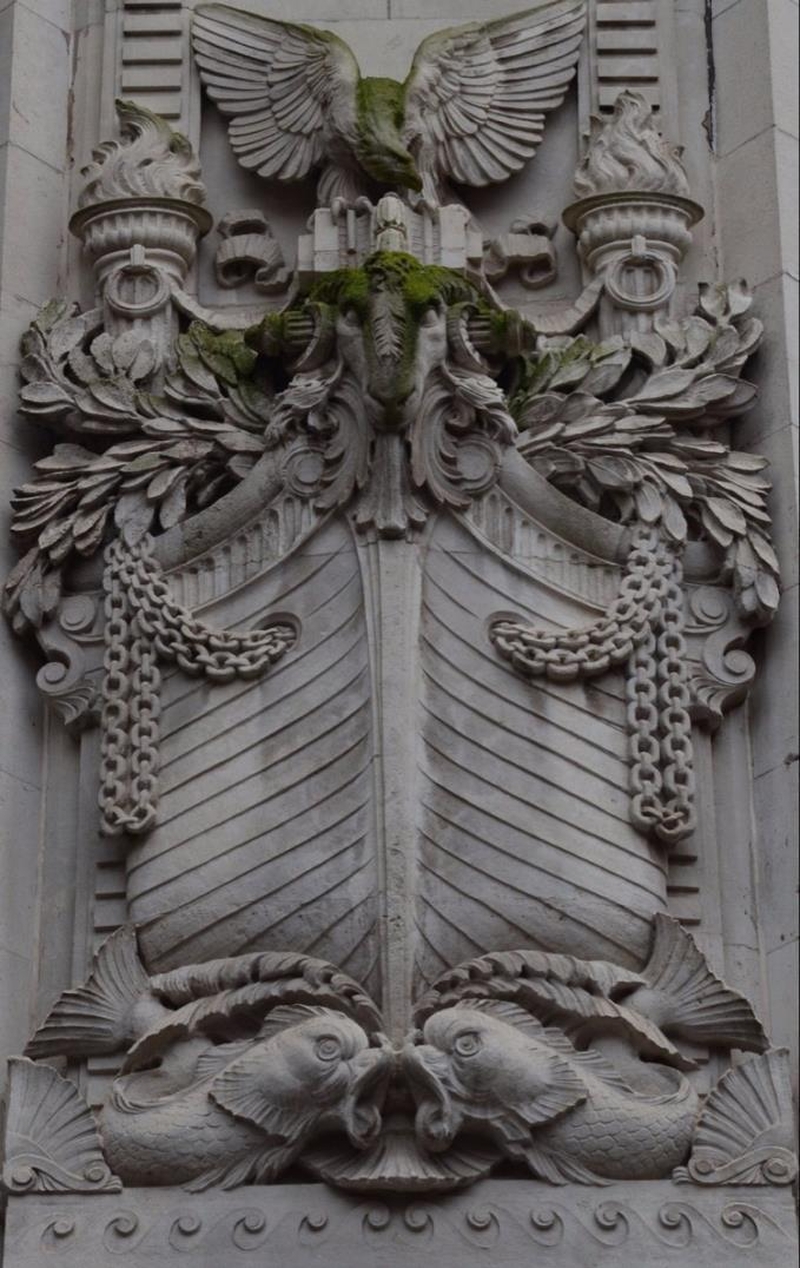
GOLDEN FLEECE AND BRAVE COMMERCE | Manchester Liners House, St Ann’s Square, 1922
Harry S Fairhurst designed this white Portland Stone building and included space for a splendid relief sculpture from the firm of Earp, Hobbs and Miller. Manchester Liners were the clients and they ran a fleet of ships from Manchester Ship Canal principally on transatlantic routes. This work is beautifully and crisply carved with a high ship’s prow ploughing the waves over a pair of annoyed-looking and very big fish. The prow is adorned with a ram’s head and a golden fleece, a reference to the Jason and the Argonauts Greek myth but also underlining the point that trade brings prosperity.
A majestic eagle signifying strength and authority is alighting onto the boat which in turn refers to the business of Manchester Liners but also the ship on the city coat of arms, see above. Lanterns on each side symbolise wisdom. There is an inescapable feeling of movement. The whole work is the antithesis of the leaden cotton bud fountain by Peter Randall-Page a few metres away in St Ann’s Square.

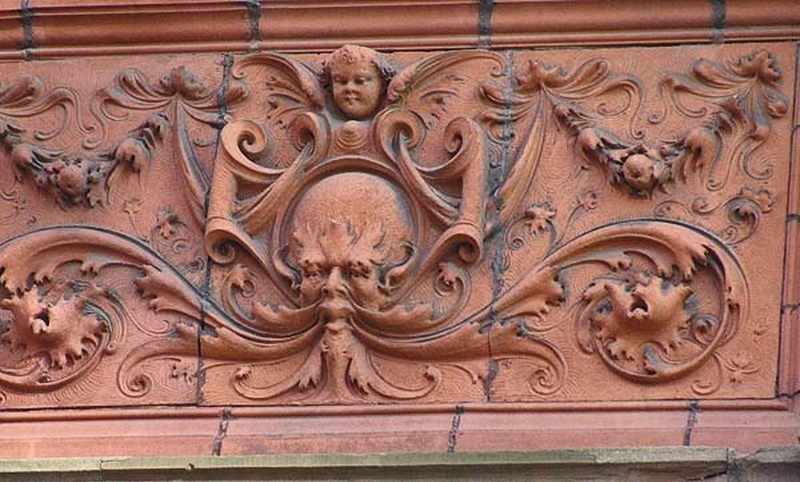
CHERUBS AND WIZARDS | Elliot House, Deansgate, 1888
School Boards were statutory bodies that from 1870 ran elementary and primary schools. Manchester decided it needed a purpose-built building as the administrative centre and so in 1888 architects Royle and Bennett delivered a Queen Anne style building on Deansgate in brick, terracotta and matching red sandstone. The window surrounds on the corner splays of the buildings sport pairs of vigorously carved cherubs rearing out of equally well-carved foliage. The cherubs and little children analogy is clear.
Higher on the building are some quite mad terracotta reliefs, with wizard-like teachers, Merlins for the kids perhaps. These have the best eyebrows in Manchester and globes for craniums. As with the mysterious Green Men found on old churches, vegetation flows from their mouths, in this case literally planting new ideas in the youngsters' brains.
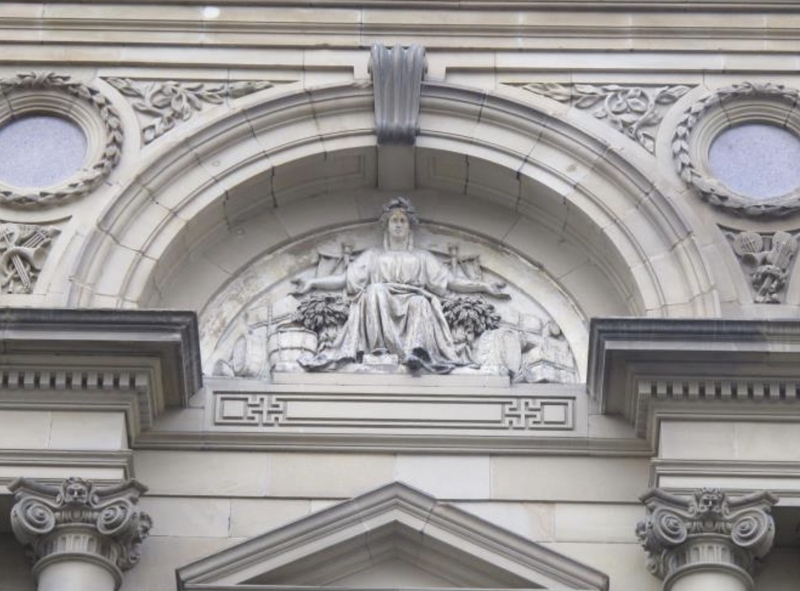

FREE TRADE TRIUMPHANT | Free Trade Hall (The Edwardian Hotel), Peter Street, 1856
Manchester was the centre of the Free Trade movement dedicated to removing tariff barriers between goods in different countries and thus letting commerce flourish unhindered by narrow, nationalistic interests. The Free Trade Hall, now The Edwardian Hotel, was a meeting place for the movement and then its monument after the British government started to move to the principle of Free Trade. The two remaining 19th-century walls were part of the third hall, completed in 1856 and designed by Edward Walters, replacing temporary structures. The rest of the older building was destroyed by WWII bombing.
On the first floor are carved figures by John Thomas representing the Arts, Commerce, Agriculture and the Continents. In the central panel, Free Trade herself, spreading her arms to give and receive, bestows her favours upon the nation and Empire wearing a corn wreath on her head - the Free Trade movement of the city arose out of the Anti-Corn Law League (I know it gets complicated). America is represented by a topless native American woman. She's sat on a buffalo surrounded by cotton, molasses (refined sugar cane) and other American raw materials. Between these works are jolly reliefs of musical instruments, an acknowledgement that aside from serious debate, this will be a place of entertainment.
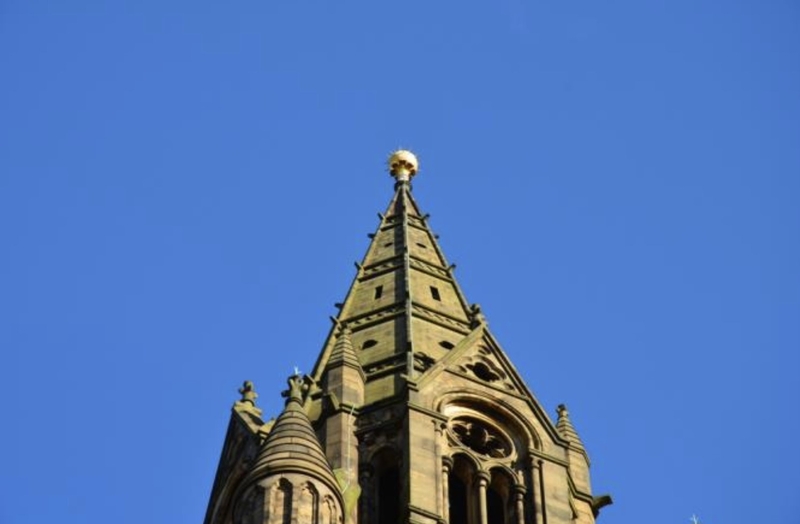
THE SUN ALWAYS SHINES | Manchester Town Hall, Albert Square, 1877
In some respects this is the most obvious symbol in the city, you just have to look up to see it. On top of the spire of Manchester Town Hall Clock is a golden ball with spikes. This is the height of a man from base to top and symbolises a cotton bud about to burst. Cotton was credited for being the product that had propelled Manchester from regional significance to international recognition. The cotton flower is an oft-repeated decorative motif around the city. The work has also been described by several commentators as representing the sun, for wherever the sun shone Manchester had interest or influence. This would reflect the globe covered by Manchester bees on the city coat of arms. The sun motif is repeated in the ceiling of the Banqueting Room in the Town Hall. There may have been a religious element to this. The sun can be taken as a symbol of God or Jesus - in other words, of the heavens above.
By the way, some wag on a guided tour last week asked if the golden thing crowning the Town Hall was an early representation of the coronavirus. Bad taste, but it still made me laugh.

STARS AND TRIANGLES | Albert Memorial, Albert Square, 1867
Once every year on my guided tours, someone in Albert Square will say: "Was Queen Victoria's husband, Prince Albert, Jewish? There's a Star of David on the Albert Memorial." The answer is no, Albert wasn't Jewish and those aren't Stars of David as such but they are religious and they do share the shape of the Jewish symbol.
The star, traditionally, was a reference to the moment of creation and its representation reveals God as the Creator. One made up of two equilateral triangles is, for Christians, very special. The triangles represent the Holy Trinity. Each of the sides is equal because there is no precedence in the Trinity; God, the Son and the Holy Spirit are equally potent. The combination of the triangles connects Heaven and Earth as well. One points up and touches the divine presence, the other reaches down to touch Earth and bring that divine presence below.
This frequently used symbol, particularly beloved of Victorian Gothicists, appears in many places across the city centre but also on suburban villas.
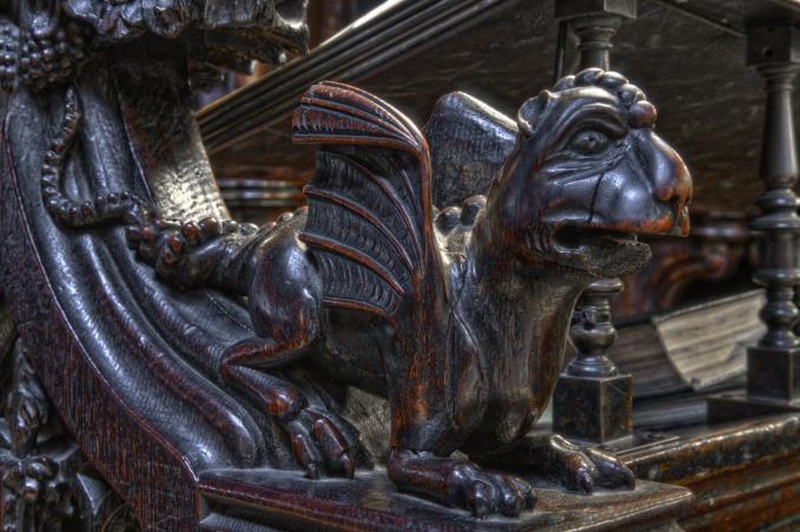
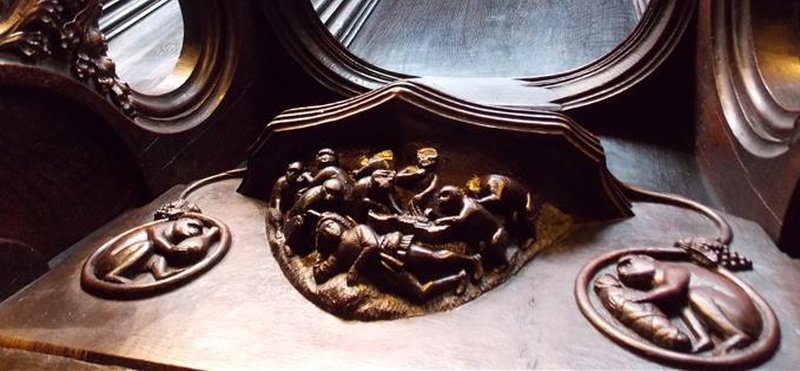
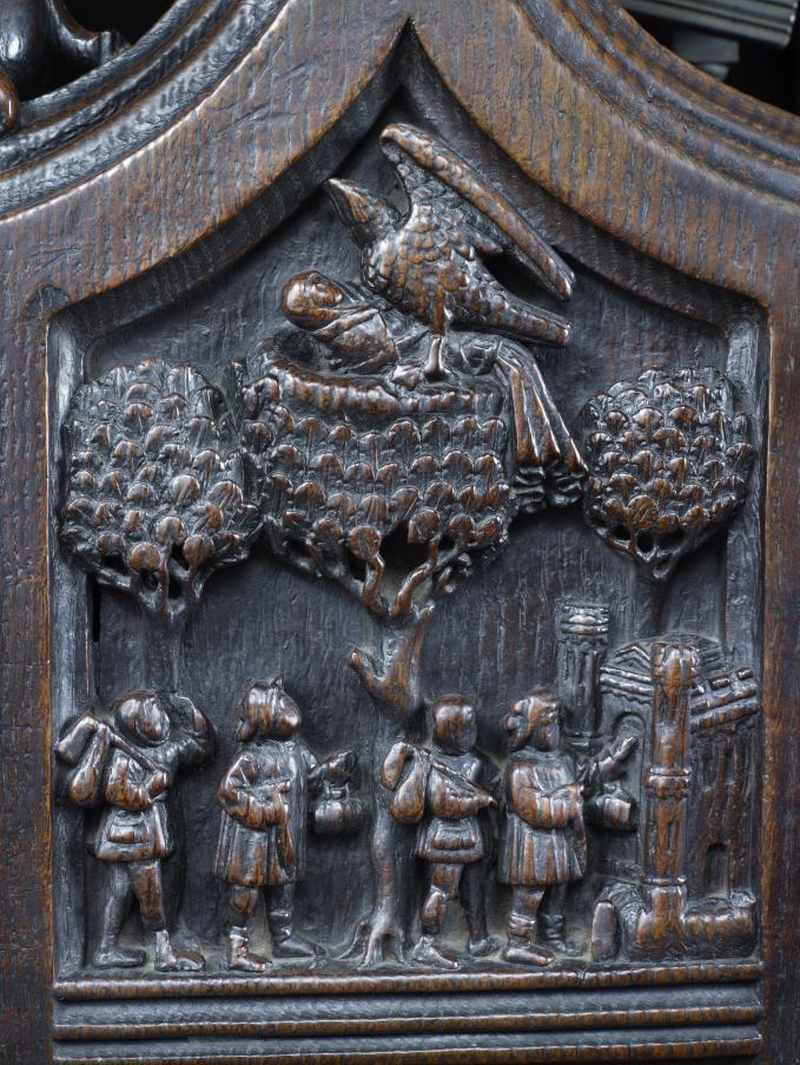
DRAGONS, DEVILS AND DOCTORS | Manchester Cathedral, late 1400s and early 1500
The stalls of the Manchester Cathedral choir are justifiably celebrated as one of the greatest unified artworks in the North of England. Over five hundred years old they are so full of symbolism, a book would be needed to capture all the details, and there have been a couple written. On the north side of the choir is a dragon. Dragons signify the devil. Satan takes the form of a devil in the Book of Revelation when he makes war in heaven.
Not all the imagery is entirely religious in the church though. Under the misericords ("pity-seats" to help hard-pressed clergy rest their jacksies during long services) there's satire and mischievous fun. One shows an ape with a bottle, an ape with a baby and apes robbing a pedlar. Doctors diagnosed people from their urine samples. The implication here is that you might as well trust an ape with the sample or with your baby and that doctors are useless and all they are doing is robbing you.
Also on the stalls is the legend of the Eagle and the Child which was adopted by the Stanley family (the Earls of Derby) who paid for the south stalls. In the legend, Sir Thomas was desperate for a male heir but by remarkable good fortune, whilst out in the Lancashire forests, an eagle flapped past and laid a boy child at his feet (or the knight found the boy under an eagle's nest). He rode back to show this wife who was overjoyed. Meanwhile, nobody noticed the maid had lost a huge amount of weight.

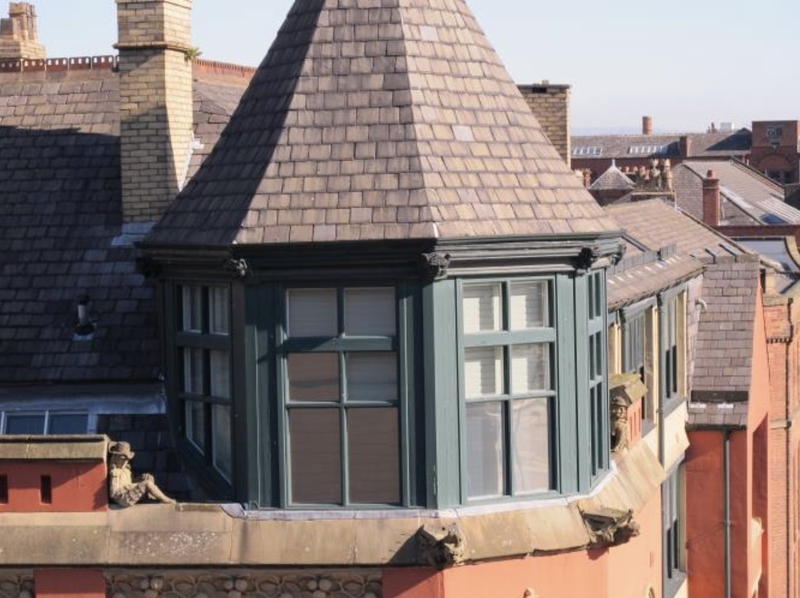
LAZY SODS | 77-83 Piccadilly, the mysterious snoozers of Piccadilly, 1877
In an article celebrating the meaning of things in our signs, symbols and sculpture I have no idea what these two are supposed to be up to. They appear at the top of this former cotton warehouse in a crazy blast of untypical flamboyance from the usually sober practice of Clegg and Knowles. Best viewed from the multi-storey car park opposite they are a pair of charmers seemingly sleeping off a heavy night out.
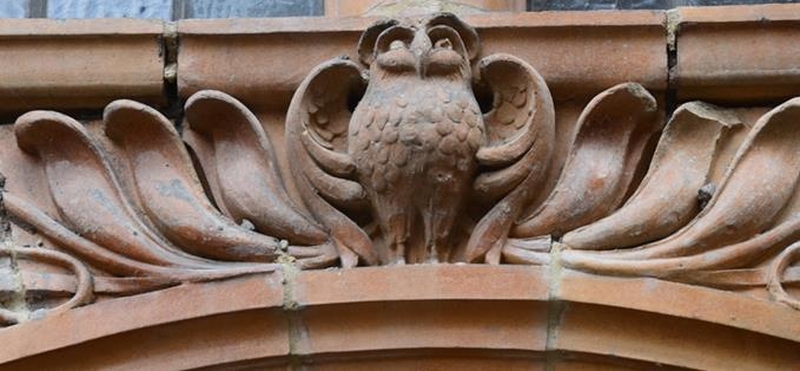
FLYING TO THE PUB | Mr Thomas's Chop House, Cross Street, 1901
Terracotta temple Mr Thomas's has always been a celebration of flashiness and wit since it was rebuilt in the early twentieth century by Robert Walker. Covered in detail, it's been a beacon for those seeking refreshment, the decoration seemingly dragging people almost against their will into the hostelry. At the rear over the door from the churchyard of St Ann's is a cute little owl with a wonky eye. Owls have meant wisdom ever since the bird represented Athena the Greek Goddess of wisdom. So here at the pub the meaning appears clear: In Vino Veritas, 'the truth lies in wine'. That cute little owl is inviting us in for a drink, it's the wise thing to do.





